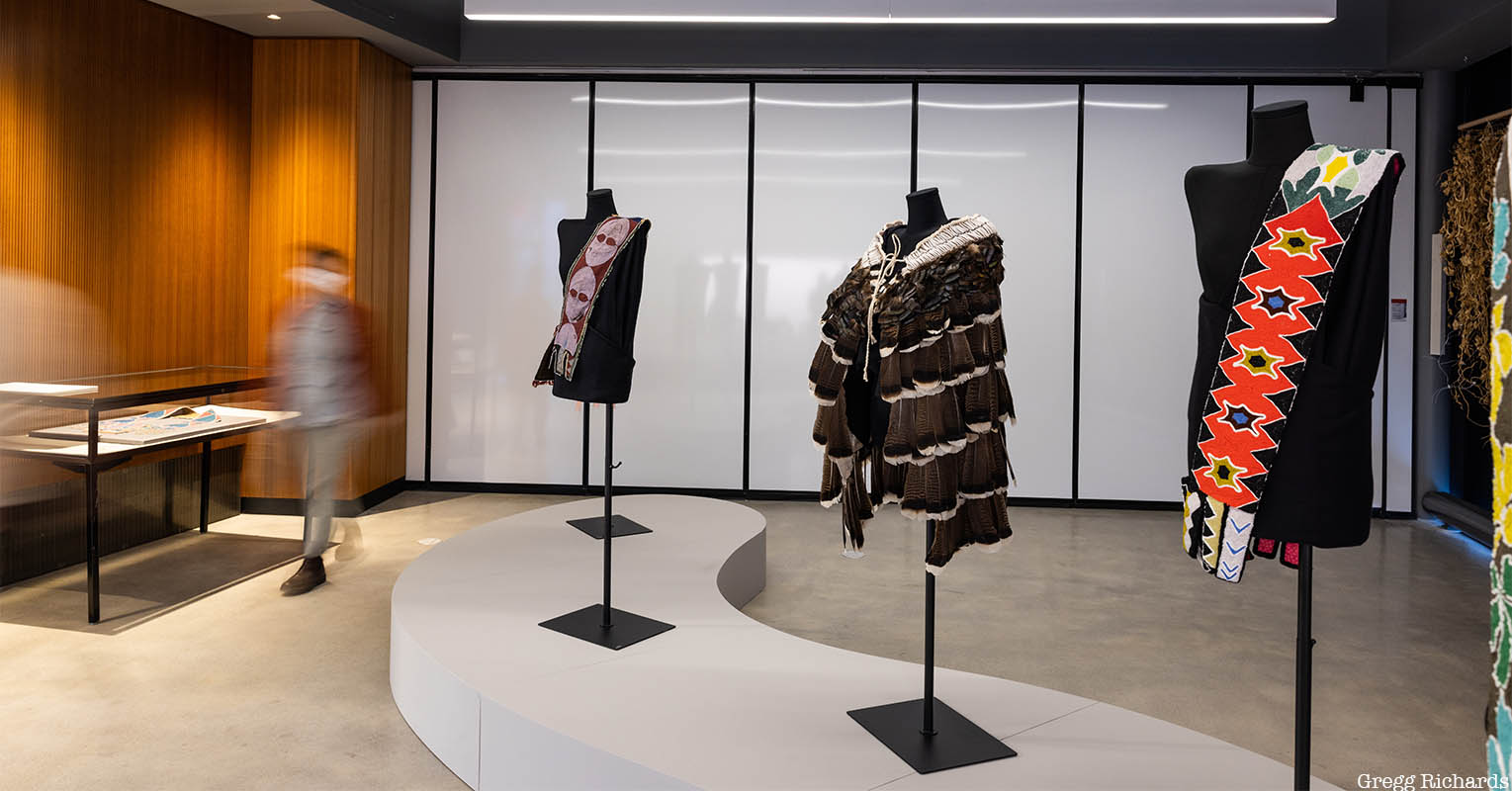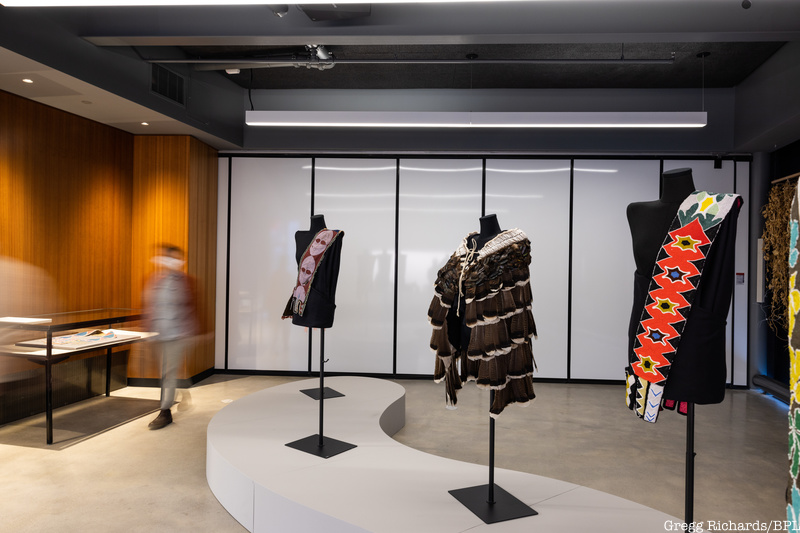“Lenapehoking” is a new exhibition at the Greenpoint Library showcasing historic and contemporary Lenape masterworks. It is the first exhibition in New York City about Lenape culture that’s also curated by Lenape people. The exhibition was organized by The Lenape Center and is meant to celebrate the return after more than 400 years of the Lenape people to New York City.
“Lenapehoking” is what the Lenape people call their homeland, roughly translating to “in the land of the Lenape.” The New York City region is at the geographic center of Lenapehoking but their homeland encompasses an area spanning from Connecticut west through the Catskills of New York and down through Eastern Pennsylvania, all of New Jersey, and northern Delaware.
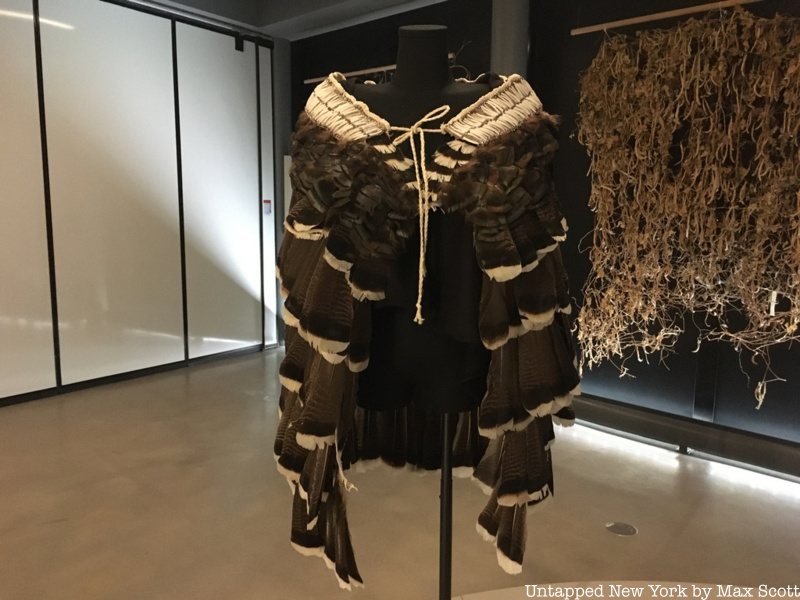
The exhibition is set in a sleek modern room on the second floor of the new Greenpoint Library & Environmental Education Center in Brooklyn, which opened in October 2020. Covering an entire wall are hanging bean tapestries, which were grown as part of an ongoing seed rematriation project in the Lower Hudson Valley. Outside the room, sitting on shelves behind a pane of glass are four types of Lenape seeds that have recently been brought back from the brink of extinction. The center of the room presents four bandolier bags ranging in age from the 1830s to contemporary works made only a few years ago. A turkey feather cape, made by Lenape poet and educator Rebecca Haff Lowry, stands in the middle of the bandolier bags.
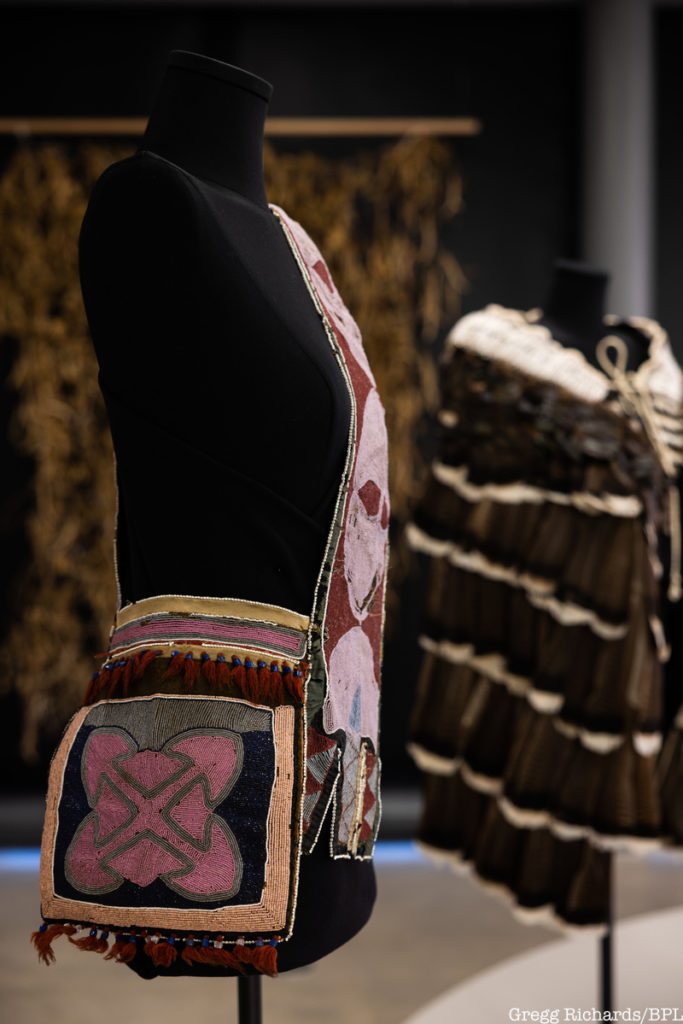
The bandolier bag was an important piece of men’s attire. The bags are made from thousands of tiny beads and “can take two years or more” to make, curator Joel Whitney told Untapped New York. Bandolier bags were worn for special occasions like social gatherings or political meetings between tribes. Crucially, the item acted as a “passport” for its wearer in that it signaled to other northeastern woodland tribes that the wearer was Lenape.
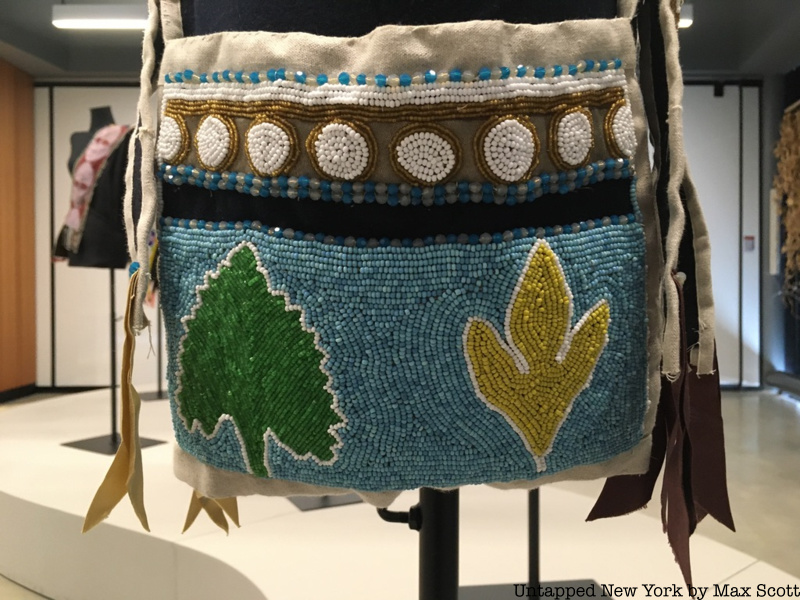
Aside from showcasing the work of Lenape people both current and past, the exhibition teaches visitors bits and pieces of the more than 400-year long history of genocide and colonization that has taken place in the Americas. The story begins in the mid-1500s when the Dutch and British first arrive on the shores of Lenapehoking. Although Indigenous peoples had been living on the land for thousands of years, the European colonizers immediately set to work claiming and fortifying coastal ports for commerce. Despite constant encroachment from Europeans, the Lenape largely remained in their homeland for over 200 years after the first contact with the Europeans. This is not to imply that the colonial powers were in any way friendly or cooperative with their Indigenous neighbors; they began the process of genocide by stealing countless acres of coastal land, making bad-faith agreements, and raiding Lenape farmland across the Northeast.
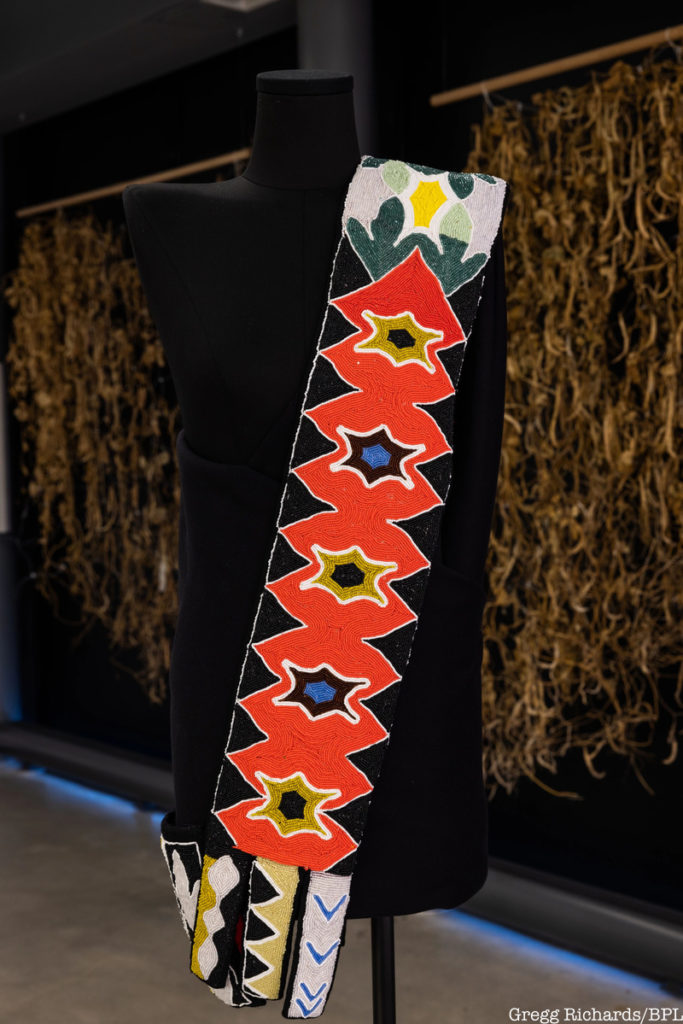
However, after the formation of the United States, the new government went to work systematically removing Indigenous peoples from their lands all across the original thirteen colonies. With the passage of the Indian Removal Act of 1830, the remaining Lenape in Lenapehoking were forcefully displaced to territories west of the Mississippi River like Kansas and Oklahoma. One of the bandolier bags on display at this exhibition actually dates back to the 1830s and was made during that horrific time of brutal killing and upheaval.
Not only were Lenape people themselves killed and pushed off their lands, but the United States government attempted to erase their food and cultural traditions as well. Thankfully, the U.S. government was unsuccessful at complete erasure. Today, the hard work of restoring and rebuilding food and culture is being celebrated at the Greenpoint Library.
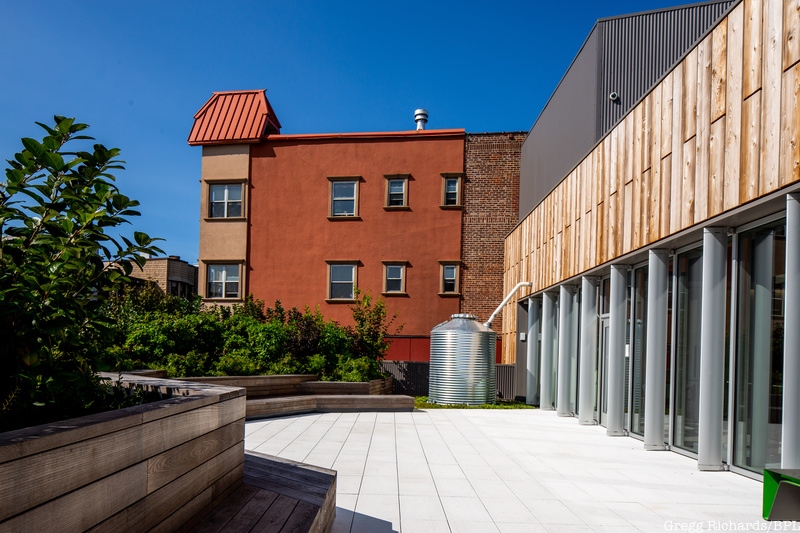
The Lenapehoking exhibition presented the work of an ongoing seed rematriation project taking place in the upper Hudson Valley. The Lenape Center, in conjunction with Farm Hub, has cultivated traditional Lenape seeds and brought them back to their ancestral soil in New York City. The Greenpoint Library’s roof is now home to Indigenous fruit trees and some of the seeds used in the rematriation project are on display right downstairs in the Lenapehoking exhibition.
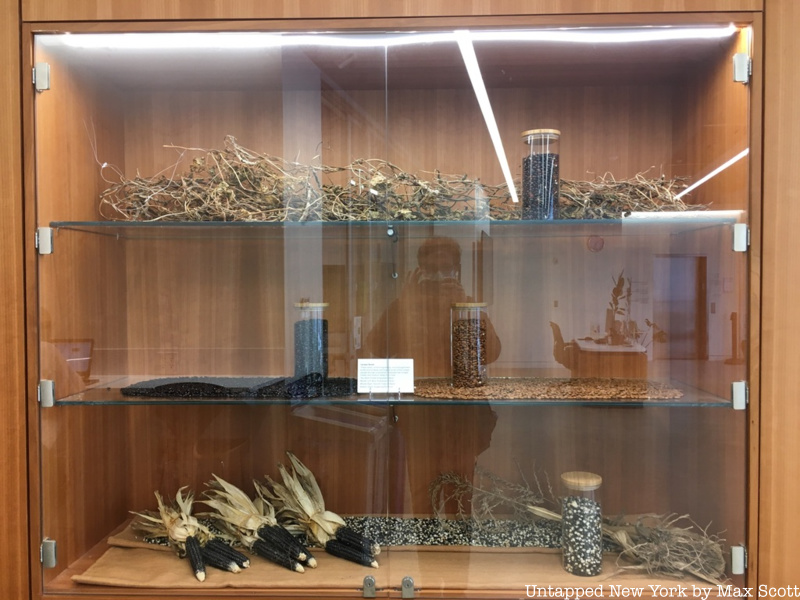
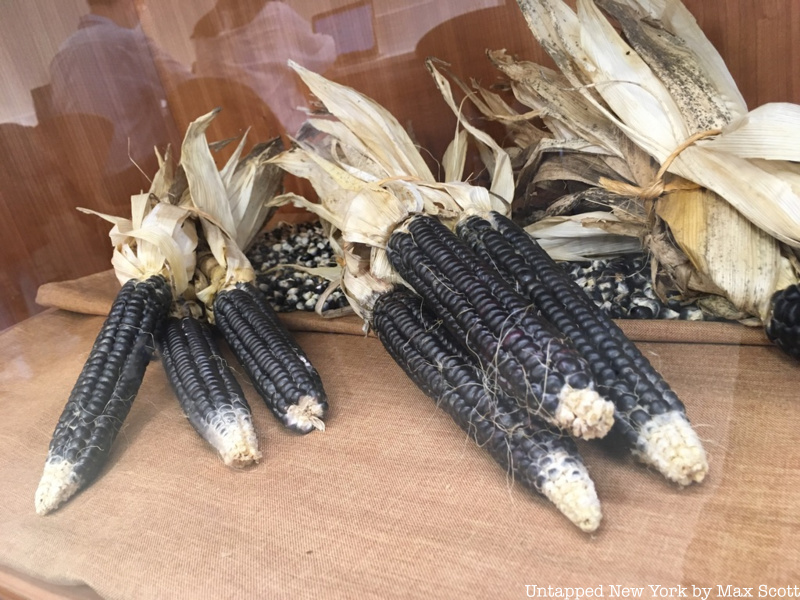
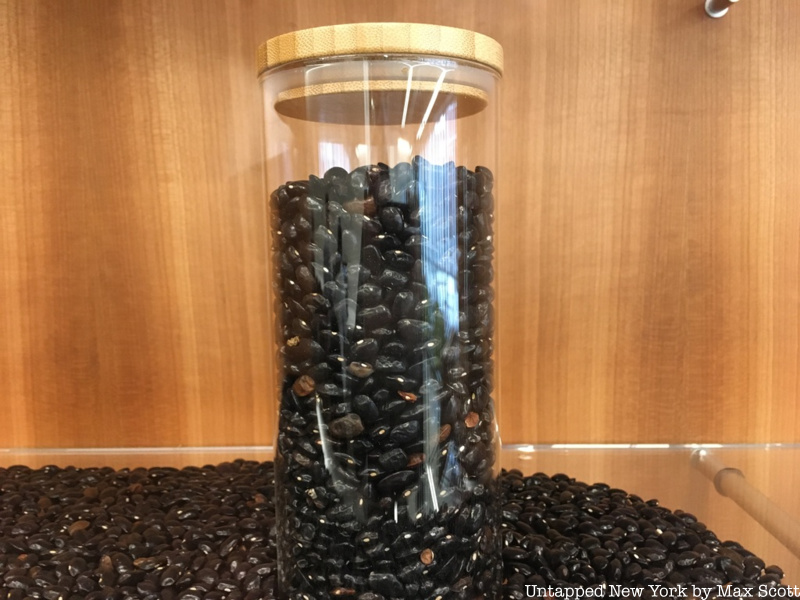
In addition to the physical items, the Lenapehoking exhibition hosts educational talks and poetry readings to, in the words of Brooklyn Public Library’s Joel Whitney, “make sure that New Yorkers and Brooklynites have accurate and truthful information” about the United States government’s genocide and forced displacement of Indigenous people from their homeland. The educational programming ranges from contemporary music made by Lenape composers to a lecture given by a Lenape professor on the myths surrounding the purchasing of Manhattan. From historical artifacts to seed rematriation and academic talks, “Lenapehoking” is a valuable and long-needed exhibition that disentangles colonial perspectives and retells our nation’s founding stories to shed light on the truth of history.
As an Untapped New York Insider, you can take a free curator tour of the Lenapehoking exhibition and be guided around the new Greenpoint Library & Environmental Education with Acacia Thompson, Greenpoint Library Environmental Justice Coordinator and Joel Whitney, Manager, Programs, Exhibitions and Events. Use code JOINUS to get your first month free of Insiders!
Next, check out the 21 Native American Heritage Sites in NYC.






